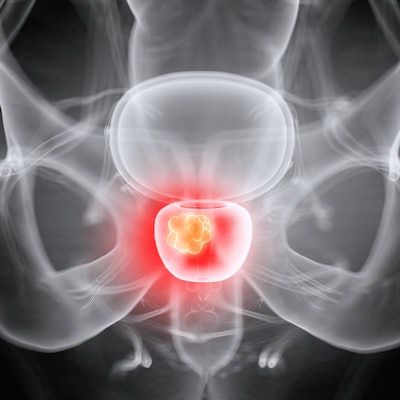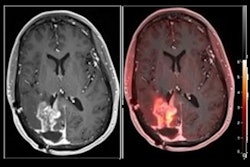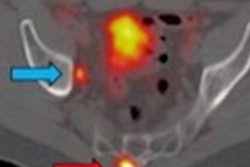
PET/CT is significantly better at detecting prostate cancer recurrence when used with the radiopharmaceutical gallium-68 (Ga-68) prostate-specific membrane antigen (PSMA) than with F-18 fluciclovine, according to an article recently published online in Lancet Oncology.
Several studies have demonstrated that both F-18 fluciclovine PET/CT and PSMA-PET/CT surpass conventional imaging for the detection of recurrent prostate cancer in patients who received radical prostatectomy. However, conflicting recommendations exist regarding the best technique: the U.S. National Comprehensive Cancer Network (NCCN) views fluciclovine PET/CT as standard of care, whereas the European Association of Urology favors PSMA-PET/CT, noted first author Dr. Jeremie Calais from the University of California, Los Angeles and colleagues.
To determine the more effective method between the two, Calais and colleagues assessed the capacity of Ga-68 PSMA PET/CT and F-18 fluciclovine PET/CT to detect recurrent prostate cancer in 50 patients who previously underwent radical prostatectomy and maintained relatively low prostate-specific antigen (PSA) levels (Lancet Oncol, July 30, 2019).
Overall, the researchers found that the cancer detection rate of PET/CT with PSMA was more than two times greater than with fluciclovine. The odds ratio of cancer detection using PSMA compared with fluciclovine was 4.8 (p = 0.0026). A subanalysis of the techniques' diagnostic accuracy by anatomical region additionally confirmed that PSMA was superior to fluciclovine at detecting cancer within the pelvis and in regions beyond the pelvis.
| PSMA-PET/CT vs. fluciclovine PET/CT for prostate cancer recurrence | ||
| F-18 fluciclovine PET/CT | Ga-68 PSMA PET/CT | |
| Overall detection rate | 26% | 56% |
| Detection rate in pelvic region | 8% | 30% |
| Detection rate beyond pelvic region | 0% | 16% |
"PSMA should be the PET tracer of choice when PET/CT imaging is considered for subsequent treatment management decisions in [prostate cancer] patients with biochemical recurrence and low PSA concentrations," the authors wrote.
PSMA-PET/CT certainly demonstrated better diagnostic accuracy than fluciclovine PET/CT, yet the need remains for trials investigating the therapeutic outcomes of using these tracers and not just the diagnostic benefits, Dr. Nicola Fossati and colleagues from the IRCCS San Raffaele Hospital in Milan noted in an accompanying editorial.
Furthermore, histological analysis of salvage lymph node dissection revealed that PSMA substantially underestimated the tumor burden. In addition, the current study assessed the effectiveness of the two tracers for a wide range of low PSA concentrations (from 0.2 ng/mL to 2 ng/mL), even though research has shown that the best surgical outcomes occur when patients undergo salvage treatments at a PSA concentration of less than 0.5 ng/mL.
The detection of prostate cancer recurrence at PSA concentrations exceeding 0.5 ng/mL might result in delayed salvage treatments with worse outcomes, Fossati and colleagues wrote. "Taken together, these findings suggest that PSMA has improved the diagnostic accuracy of PET/CT scans ... [but] it did not solve all the limitations of PET/CT, being less accurate at a relatively low detection rate with a notable underestimation of disease burden."



















